#Sir George Gilbert Scott
Explore tagged Tumblr posts
Text
Thank you for the tag, @defensivelee!
Here are four pieces of art I've chosen - it's mostly portraits of people:
1) A self portrait done by Pablo Picasso:

2) Andy Warhol's pop art portrait of Marilyn Monroe:

3) The Albert Memorial across from the Royal Albert Hall; designed by Sir George Gilbert Scott:


4) And last but not least, The Windsor Beauties by Sir Peter Lely (does it matter that there's more than one??):

And now I'm also tagging @culpepers-wife, @vintagedolce, @lavenderrosiefan and @tapdancinghllnd to join if they want :-).
#art#ask game#we have a pretty witty queue#this was fun thanks for the tag sheep!!#artwork#picasso#andy warhol#marilyn monroe#albert memorial#sir george gilbert scott#windsor beauties#sir peter lely
4 notes
·
View notes
Text
the classic british phone box was based on a tomb?
"Visible from the graveyard and sharing its name with the same martyr, St Pancras, is the sister station to King’s Cross, a Victorian gothic masterpiece built by Sir George Gilbert Scott. Just under half a century after this station opened, the architect’s son, Giles Gilbert Scott had entered a competition to design a telephone box. He trod around the graveyard of St Pancras Old Church, in the shadow of his father’s masterpiece, and found inspiration: the central domed structure of Soane’s tomb."
https://publicdomainreview.org/collection/the-tomb-and-the-telephone-box-soane-s-mausoleum-1816/


thinking about those safety coffins with cords leading to bells outside and phones (later) people would put in graves now
306 notes
·
View notes
Text
Books To Read In 2025
A Brief History of Time
Agamemnon by Aeschylus
Alice in Wonderland by Lewis Carroll
Animal Farm by George Orwell
Babel or the Necessity of Violence
Beasts by Joyce Carol Oates
Bobbsey Twins by Laura Lee Hope
Brave New World
Carmilla by J. Sheridan Le Fanu
Cleopatra and Frankenstein by Coco Mellors
Crime and Punishment
Corpus of Mycenaean Inscriptions from Knossos
Doctor Faustus by Christopher Marlowe
Dracula by Bram Stoker
Frankenstein by Mary Shelley
Faust by Johann Wolfgang von Goethe
Giovanni’s Room by James Baldwin
Goodbye, Columbus by Philip Roth
Hamlet by William Shakespeare
Invisible Man by H.G. Wells
Interview with the Vampire by Anne Rice
Ivanhoe by Sir Walter Scott
Lycidas by John Milton
Little Women by Louisa May Alcott
Madame Bovary by Gustave Flaubert
Marino Faliero by Lord Byron
Mémoires by Duc de Saint-Simon
Men of Thought and Deed by E. Tipton
My Year of Rest and Relaxation by Ottessa Moshfegh
Notes from Underground by Fyodor Dostoevsky
Orestia by Aeschylus
Othello by Shakespeare
Paradise Lost by John Milton
Phantom of the Opera by Gaston Leroux
Poetics by Aristotle
Pride and Prejudice by Jane Austen
Republic, Book II by Plato
Sherlock Holmes by Sir Arthur Conan Doyle
The Bacchae by Euripides
The Broken Heart by John Ford
The Charge of the Light Brigade by Alfred Lord Tennyson
The Collector by John Fowles
The Divine Comedy by Dante Alighieri
The Handmaid’s Tale by Margaret Atwood
The Hound of the Baskervilles by Arthur Conan Doyle
The Iliad by Homer
The Lotus Eater by Homer
The Lord of the Rings by J.R.R. Tolkien
The Malcontent by John Marston
The New Testament
The Picture of Dorian Gray by Oscar Wilde
The Pirates of Penzance by W.S. Gilbert
The Secret Garden by Frances Hodgson Burnett
The Secret History by Donna Tartt
The Song of Achilles by Madeline Miller
The Trial by Franz Kafka
The Waste Land by T.S. Eliot
To Kill a Mockingbird by Harper Lee
Untimely Meditations by Friedrich Nietzsche
Vanity Fair by William Makepeace Thackeray
War and Peace by Leo Tolstoy
Wuthering Heights by Emily Brontë
Why Fish Don’t Exist by Lulu Miller
With Rue My Heart is Laden by A.E. Housman
Journey from Chester to London by Thomas Pennant
Let the Right One In by John Ajvide Lindqvist
The Club History of London by ?
The World Book Encyclopedia
Invisible Man by Ralph Ellison
Rover Boys by Edward Stratemeyer
A Discovery of Witches by Deborah Harkness
The Nickel Boys by Colson Whitehead
The Shining by Stephen King
A Little Life by Hanya Yanagihara
Normal People by Sally Rooney
The Goldfinch by Donna Tartt
The Virgin Suicides by Jeffrey Eugenides
#dark academia#romantic academia#chaotic academia#books and coffee#light academia#moodboard#quotes#dark academia aesthetic#academia aesthetic#dark academia moodboard#soft academia#soft aesthetic#classic academia#light academia moodboard#light academism#dark academia vibes#darkacademia#aesthetic#literature academia#source: pinterest#pinterest moodboard#not my oc#images from pinterest#art academia#book recommendations
402 notes
·
View notes
Text


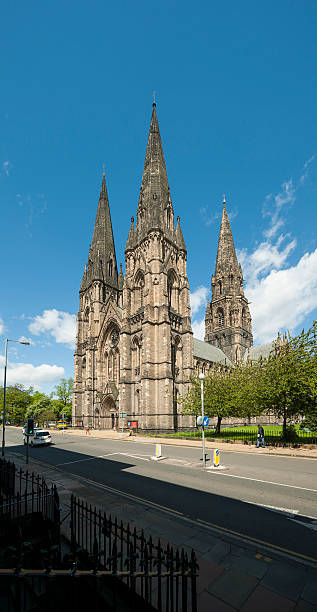
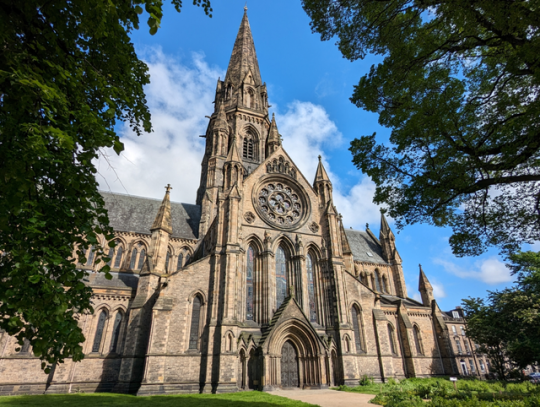

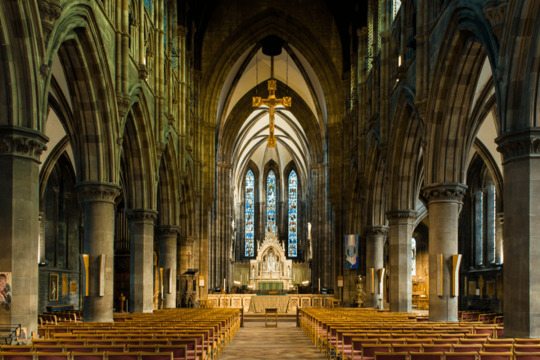

On October 29th 1879 a service of consecration was held at the newly completed St Mary’s Episcopal Cathedral in Edinburgh.
At the “glorious” revolution in 1688, the Scottish bishops and supporting clergy were ejected as non-Jurors because they refused to swear an oath to William of Orange, choosing instead to support the supplanted King James; so the established church in Scotland was handed over to Presbyterian governance. St Giles in consequence became once more the “High Kirk” of Edinburgh. The ejected Episcopalians, because of their Jacobite leanings, became subject to severe penal laws until 1792. After this they were free, largely to develop as they could. Gradually their obscure meeting houses gave place to churches, but for many poverty-stricken years there were no cathedrals in the seven dioceses of Scotland. In particular, in the Diocese of Edinburgh other churches were used as the “pro-Cathedral” until St Mary’s was completed in 1879, it took five years to build.
Barbara and Mary Walker left the whole of their property to the Episcopal Church in Scotland, thus enabling the building of a Cathedral which was to be dedicated to St Mary the Virgin, and also setting up trustees to endow the Cathedral and to set up grants in aid of other church work.
An architectural competition was arranged. Amid controversy, including accusations of plagiarism and favouritism from six competing designs, three from Scottish, three from English architects. That of the English Sir George Gilbert Scott was chosen with plans submitted under the clever anonymous motto, “Auld Lang Syne”. The foundation stone was laid on 21st May 1874 by the Duke of Buccleuch and Queensberry, and the building consecrated on 30th October 1879. The cost was £110,000, but rising wages forbad the completion of the Chapter House and western spires. The former was added in 1890 at a cost of £5,000, the latter by church people in memory of the founders during 1913-17 at a cost of £13,200.
The style of Scott’s design for the Cathedral was inspired by the early Gothic churches and abbeys of Scotland. He gave it as large a floor space as the site would allow and made the massive central tower and spire and the twin western spires such prominent features that they may be seen from miles away. The enormous weight of the central tower is carried on four main pillars and spread through diagonal arches into buttresses in the outer walls, leaving unusually open views inside.
Whereas you can see the spires of St Mary’s from any elevated position in Edinburgh, the close confines of the New Town means it is hardly visible from surrounding streets, except the wide vistas of Melville street, which is a shame, I think it is not visited as much as other City attractions, it is well worth a visit, and if you are after an early start on a tour of Edinburgh the Cathedral opens its doors at 7.30 each morning, it can be eerily quiet at that time and I would say is the best chance to grab pics without other tourists around getting in your shots. If you have a good camera with plenty of zoom, you can get a good pic of the spires from Edinburgh Castle, as seen from the last pic.
My highlight inside is the modern stained-glass windows by Eduardo Paolozzi, “inventor” of the Pop art movement.
65 notes
·
View notes
Text
Episode 50 - Foundations
Sampson Kempthrone (That sounds very fancy)
George Gilbert Scott (Three first names, can’t trust him)
Another letter statement from 1841.
Okay but the description of Jonah’s townhouse sounds cozy.
A New Zealand trip in 1841? They’re mega rich.
Henry Roberts? Also an architect?
Oh yes, workhouses! If you work 20 hours a day you’ll be too tired to commit crimes.
There’s next to no difference between prisons and workhouses.
This episode is going to send me into another history rant.
This guy can go fuck himself. Rich fuck.
Turning people into slaves is not making them better. Unions and workers rights did that.
Goerge has a cursed book, because I don’t remember when Litner books were started. Only way to explain the speaking in tongues and sweaty appearance.
An architect being stressed about drawings is lowkey normal.
“An architect’s job is to draw ideas and an engineers job is to tell the architect what is actually possible”
Are these the tunnels that we saw before where they kept measuring the width of the tunnel? And I believe that Gerard sucker punched a guy?
Millbank Prison tunnels^^
Goerge cannot handle criticism.
Sir Robert Smirke mentioned.
Robert has an agenda, and you are simply a footnote in it.
OH Sampson is also an architect. Now that makes way more sense.
September of 1836, is when it happened.
Clack of the cane, made to sound spooky.
Dude just had a hat man encounter. Nothing that bad.
The Governor? Is that the name of the hat man in the 1800s?
Who is Harry?
Paranormal construction methods officially sent me while at the laundromat.
George Gilbert Scott was involved in many of the important buildings in London(?), I’ll admit I have little geography knowledge of the UK.
Supplemental??
Basira came to talk to Jon.
Tim saying that he doesn’t trust Basira while sleeping with other cops is iconic.
NOOOOOOOOO
Omg now Tim is going to gossip that Jon is hooking up with Basira.
Tim did not let Jon get a single word in after. Jon has a corrupt cop girlfriend now, at least according to Tim.
I love how we are not getting into the paranormal architect plot now. All I can assume is going on is that there’s secret cult tunnels underneath all of London. But I would like for it to be more like the tunnels are acting as energy arteries. For like a massive supernatural being. The lack of information on Robert Smirk is not that surprising because records that old are incredibly rare and like if he was just an architect he wouldn’t have been deemed that important. Finally, Tim is iconic as per usual. Also, I can’t wait for angsty Martin because we all know that Tim is going to RUN with the assumption that Jon is hooking up with Basira (possibly in the archives).
An aside, is it actually Smirke? Sometimes I genuinely hate the spelling of names in this.
#the magnus archives#the magnus pod#tma first listen#tma predictions#tma analysis#jonathan sims#tma reaction#tma season two#tim stoker#basira hussain#tma foundations#robert smirke
3 notes
·
View notes
Video
Bath Abbey (Explore) by Roy Llowarch Via Flickr: Bath Abbey is a parish church of the Church of England and former Benedictine monastery in Bath, Somerset, England. Founded in the 7th century, it was reorganised in the 10th century and rebuilt in the 12th and 16th centuries; major restoration work was carried out by Sir George Gilbert Scott in the 1860s. It is one of the largest examples of Perpendicular Gothic architecture in the West Country. The medieval abbey church served as a sometime cathedral of a bishop. After long contention between churchmen in Bath and Wells the seat of the Diocese of Bath and Wells was later consolidated at Wells Cathedral. The Benedictine community was dissolved in 1539 during the Dissolution of the Monasteries. en.wikipedia.org/wiki/Bath_Abbey
#Bath Abbey#Bath Somerset#Bath Spa Somerset#Bath Spa#Bath City Centre#Abbey#Abbeys#Somerset#Churches#Church#Medieval Churhes#Church Of England#Anglican Church#Architecture#Norman Architecture#Norman#Catholic#Roman Catholic#Religion#Religious#Nikon Photos#Nikon Photography#Gothic#Gothic Architecture#Gothic Abbeys#perpendicular gothic architecture#cruciform architecture#Christian#England#English
2 notes
·
View notes
Text

i ran out of doors 😔 honorable mentions include:
-Baron Amherst
-Jeremy Bentham
-Lizzie Borden
-Tycho Brahe
-Alexander Cunningham
-George Denman
-Harry G. Eisenhard
-Jack Fawcett
-Percy Fawcett
-John Flamsteed
-John Franklin
-Robert E. Geiger
-William Hutcheon Hall
-E. T. A. Hoffmann
-Abraham Janssen
-Wolfgang von Kempelen (not a day goes by where i don’t think about the mechanical turk)
-Marianne Kempthorne
-Sampson Kempthorne
-Ottilie "Tillie" Klimek
-Rev. John Heyrick Macaulay
-Empress Maria Theresa
-William Hughes Mearns
-Joseph Merrick
-William Miller
-William Bonython Moffatt
-François-André Danican Philidor
-Nicolaus Reimers
-Raleigh Rimell
-Henry Roberts
-John Ruskin
-George Gilbert Scott
-Abraham Sharp
-Laura Smirke
-John Snow
-Tintoretto
-Eduard von Toll
-Sir Frederick Treves
Issac Newton actually plays a pretty significant role in MAG 140 so this isn’t his first appearance - I wonder how similar this Newton is to TMA Newton

3K notes
·
View notes
Text

Legacy Revisited: Sir Gilbert Scott's Return to Modern Wimbledon
In the twilight of a mild summer evening, Sir George Gilbert Scott found himself back in the quaint streets of Wimbledon, a place he knew so well. The silhouette of St Mary's Church, his cherished creation from 1843, loomed gracefully against the dusky sky, its tower and spire reaching for the heavens as confidently as they did over a century ago.
As he walked down the cobblestone path towards the church, marveling at the enduring beauty of his work, he noticed a curious figure ahead—a Womble, dressed in a red hat and scarf, bustling about with an air of leisurely purpose. Intrigued, Scott approached the creature, who looked up with a friendly smile.
"Good evening, sir," the Womble greeted, extending a paw. "Name's Orinoco. And you must be Sir Gilbert Scott, the famous architect!"
"Indeed, I am," Scott replied, shaking Orinoco's paw with amusement. "I must say, it's quite surprising to meet a Womble here. What brings you out this evening?"
"Oh, just out for a stroll, enjoying the evening air," Orinoco said, his eyes twinkling. "But it's fortuitous that we meet. I was just thinking about your grandson, Giles Gilbert Scott. Quite the legacy you’ve left, sir. Did you know he's the genius behind the iconic red telephone boxes?"
Scott's eyes lit up with pride. "Ah, yes. The telephone boxes are splendid pieces of design. It pleases me greatly to see the architectural spirit thriving in my family."
Orinoco nodded enthusiastically. "Absolutely! And speaking of legacies, have you seen what's been done at St Mary's Church lately? There's a new building for the Sunday School, designed by an architect named Terry Pawson. Quite a modern addition, but it sits beautifully with your work."
Scott's curiosity was piqued. "A new building, you say? For the Sunday School, no less. I must see this for myself."
As they strolled together towards the churchyard, Orinoco chattered amiably about the changes in Wimbledon over the years. They soon arrived at the site, where the new hall stood gracefully to one side, leaving space for a lush, lawned garden in front. The building's modern lines and materials harmonized surprisingly well with the historic church.
Scott admired the thoughtful design—the hall's internal height, the stepped elevation, and the rusticated base.
"Remarkable," he murmured. "Pawson has respected the scale and character of the surroundings while introducing something fresh and functional. This visual and physical connection to the churchyard is quite masterful."
"Indeed," Orinoco agreed. "The hall is versatile, too. It can host large events or be divided for smaller gatherings. And the materials—white limestone ashlar contrasting with the dry stonewalling—echo the old church’s materiality perfectly."
Scott gazed at the building, a sense of satisfaction washing over him. "It seems the spirit of thoughtful, respectful architecture lives on. I'm glad to see my work in such good company."
Orinoco grinned. "Wimbledon has a knack for blending the old with the new. And it's always ready to welcome back those who appreciate its charm. Even if they’re just passing through."
With a warm farewell, Orinoco ambled off into the evening, leaving Scott to stand quietly, absorbing the beauty of the past and the promise of the future. The echoes of history, it seemed, were alive and well in Wimbledon.
#SirGilbertScott #Wimbledon #ArchitecturalLegacy #StMarysChurch #TerryPawson #ModernArchitecture #HistoricPreservation #GilesGilbertScott #RedTelephoneBox #Orinoco #TheWombles #LegacyOfDesign #ChurchArchitecture #CommunitySpaces #HistoricMeetsModern
0 notes
Photo

SIR GEORGE GILBERT SCOTT (1811-1876).British architect who worked extensively in the Gothic Revival style.His most notable buildings and monuments,included the Albert Memorial,in Hyde Park,opposite the Royal Albert Hall, and the Midland Grand Hotel,St Pancras station,both in London,UK and numerous workhouses around the country. https://en.wikipedia.org/wiki/George_Gilbert_Scott
LIVED AT: The Manor House,River Lane,Petersham TW10 7AG
Residence: 1864 to 1869, and again,from 1873 to 1879.
Plaque.?: NO
#Sir George Gilbert Scott#British Architects#Architectural Richmond#Famous Residents of Richmond upon Thames#Petersham#Petersham Richmond Upon Thames#Richmond Upon Thames#tw10
3 notes
·
View notes
Text
Architecture in Edinburgh, Scotland
Check out our new Category: Architecture in Edinburgh, Scotland

South of the Edinburgh Castle Gate
The definition of architecture is the outcome or product of drawing out, mapping out, planning, designing, and of course, constructing structures or even systems of order to a final construct. We are about to embark on a new category on Squidink-art.com. A place where we feel will embellish the website with a flood of artwork that must rightfully take its…
View On WordPress
#Architecture#Art#Buildings#Cam the Squid#Cathedrals#Construct#Edinburgh#History#Scotland#Sir George Gilbert Scott#Squidink-art.com
0 notes
Text
RED K6 PHONE KIOSK NORTH STREET BELFAST MARCH 2019
This phone kiosk, on North Street in Belfast, is an example of a 1936 K6 'Jubilee Box' and it is listed which makes one wonder why it is not better maintained.

View On WordPress
#1936 K6#Belfast#Fotonique#Infomatique#Jubilee Box#north street#Pay-Phone#phone kiosk#Public Telephones#Silver Jubilee of George V#Sir Giles Gilbert Scott#William Murphy
1 note
·
View note
Text

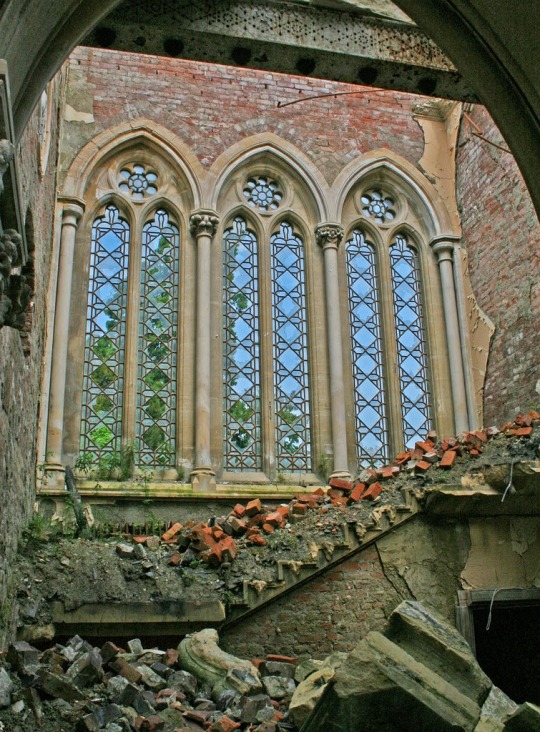
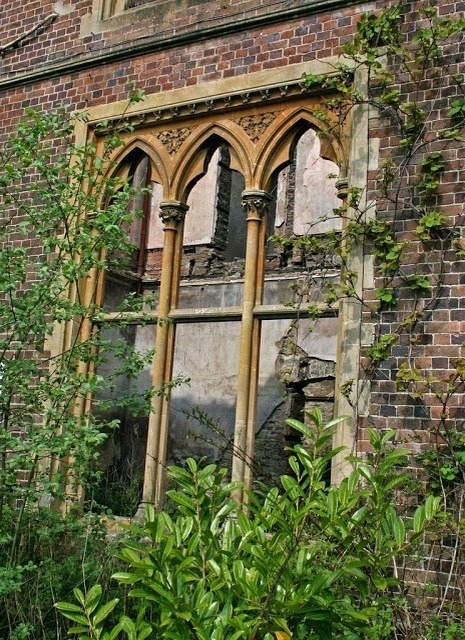


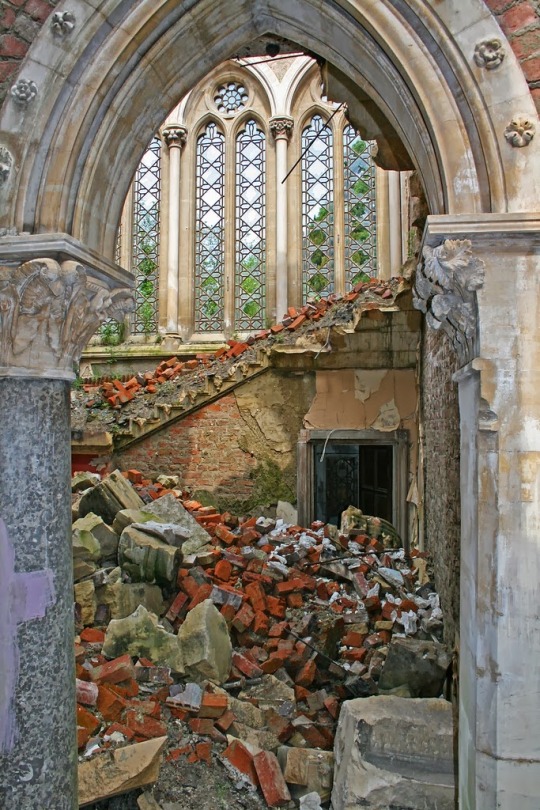
Hafodunos Hall (an abandoned mansion) in Llangernyw North Wales. This hall was a gothic revival house designed by Sir George Gilbert Scott for Henry Sandbach.
Gothic Revival architecture was a movement in the 19th century where admirers of this style tried to revive medieval gothic architecture.
The Sandbach family sold this mansion. It had many uses such as a private school for girls to an old people’s home that was later shut down.
In 2004 the house was destroyed by a fire leaving the mansion completely abandoned.
#chaotic academia#dark acadamia aesthetic#dark academia#light acadamia aesthetic#light academia#art academia#dead poets society#literature#romantic academia#aesthetic#motivation#poetry#museums#books#academia#inspirational quotes#movies#da#desology#architecture#baroque#english literature#gothic#gothic architecture#westminster abbey#abandoned#mansion#north wales#roman architecture
4K notes
·
View notes
Text
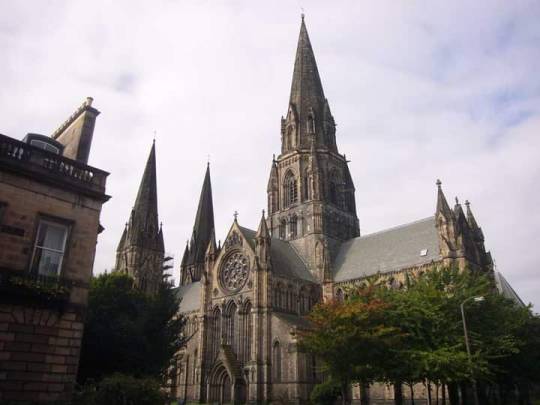
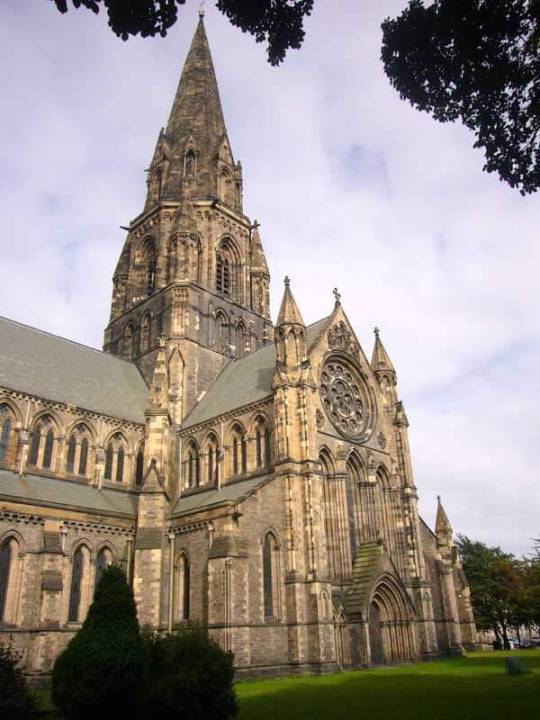

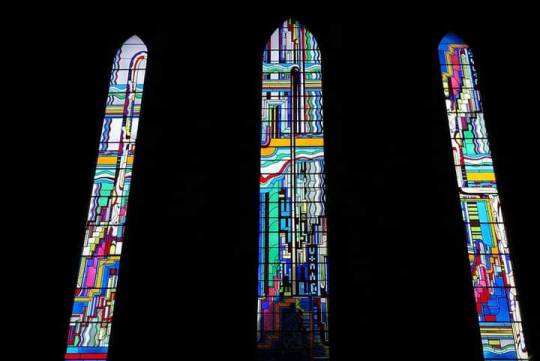
On October 29th 1879 a service of consecration was held at the newly completed St Mary's Episcopal Cathedral in Edinburgh.
At the "glorious" revolution in 1688, the Scottish bishops and supporting clergy were ejected as non-Jurors because they refused to swear an oath to William of Orange, choosing instead to support the supplanted King James; so the established church in Scotland was handed over to Presbyterian governance. St Giles in consequence became once more the “High Kirk” of Edinburgh. The ejected Episcopalians, because of their Jacobite leanings, became subject to severe penal laws until 1792. After this they were free, largely to develop as they could. Gradually their obscure meeting houses gave place to churches, but for many poverty-stricken years there were no cathedrals in the seven dioceses of Scotland. In particular, in the Diocese of Edinburgh other churches were used as the “pro-Cathedral” until St Mary’s was completed in 1879, it took five years to build.
Barbara and Mary Walker left the whole of their property to the Episcopal Church in Scotland, thus enabling the building of a Cathedral which was to be dedicated to St Mary the Virgin, and also setting up trustees to endow the Cathedral and to set up grants in aid of other church work.
An architectural competition was arranged. Amid controversy, including accusations of plagiarism and favouritism from six competing designs, three from Scottish, three from English architects. That of the English Sir George Gilbert Scott was chosen with plans submitted under the clever anonymous motto, “Auld Lang Syne”. The foundation stone was laid on 21st May 1874 by the Duke of Buccleuch and Queensberry, and the building consecrated on 30th October 1879. The cost was £110,000, but rising wages forbad the completion of the Chapter House and western spires. The former was added in 1890 at a cost of £5,000, the latter by church people in memory of the founders during 1913-17 at a cost of £13,200.
The style of Scott’s design for the Cathedral was inspired by the early Gothic churches and abbeys of Scotland. He gave it as large a floor space as the site would allow and made the massive central tower and spire and the twin western spires such prominent features that they may be seen from miles away. The enormous weight of the central tower is carried on four main pillars and spread through diagonal arches into buttresses in the outer walls, leaving unusually open views inside.
Whereas you can see the spires of St Mary's from any elevated position in Edinburgh, the close confines of the New Town means it is hardly visible from surrounding streets, except the wide vistas of Melville street, which is a shame, I think it is not visited as much as other City attractions, it is well worth a visit, and if you are after an early start on a tour of Edinburgh the Cathedral opens its doors at 7.30 each morning, it can be eerily quiet at that time and I would say is the best chance to grab pics without other tourists around getting in your shots.
My highlight inside is the modern stained-glass windows by Eduardo Paolozzi, "inventor" of the Pop art movement as seen in the pics.
28 notes
·
View notes
Video
Bath Abbey by Roy Llowarch Via Flickr: Bath Abbey is a parish church of the Church of England and former Benedictine monastery in Bath, Somerset, England. Founded in the 7th century, it was reorganised in the 10th century and rebuilt in the 12th and 16th centuries; major restoration work was carried out by Sir George Gilbert Scott in the 1860s. It is one of the largest examples of Perpendicular Gothic architecture in the West Country. The medieval abbey church served as a sometime cathedral of a bishop. After long contention between churchmen in Bath and Wells the seat of the Diocese of Bath and Wells was later consolidated at Wells Cathedral. The Benedictine community was dissolved in 1539 during the Dissolution of the Monasteries. en.wikipedia.org/wiki/Bath_Abbey
#Bath Abbey#Bath Somerset#Bath Spa Somerset#Bath Spa#Bath City Centre#Abbey#Abbeys#Somerset#Churches#Church#Medieval Churhes#Church Of England#Anglican Church#Architecture#Norman Architecture#Norman#Catholic#Roman Catholic#Religion#Religious#Nikon Photos#Nikon Photography#Gothic#Gothic Architecture#Gothic Abbeys#perpendicular gothic architecture#cruciform architecture#Christian#England#English
0 notes
Text

By: Luke Weir | 22 January 2022
Updated: 7 April 2022

There are few things so intrinsically linked with old-fashioned British culture as the red telephone box.
These became synonymous with paths all over the country during the 20th century, but inevitably, the introduction of mobile phones led to its decline from the 1980s onwards.
After decades of abandonment - with many boxes left in a derelict state - action is being taken by a local restoration company that set up the nation's largest 'telephone box graveyard' in Merstham in Surrey.
Unicorn Restorations proudly restore these iconic boxes back to their former glory following a period of them rusting away.
Staff spend up to 30 hours stripping each old kiosk, repainting them in the identical shades of red once stipulated by the General Post Office, and putting in new glass to complete the look, at the site just outside Redhill.
Once rejuvenated, they sell for a variety of prices ranging from just under £4,000 to as much as £20,000, with the price being higher for the older designs.
These include the three classic models of red telephone kiosk: the K2, the K6 and the K8.
The K6, which was designed by Sir Giles Gilbert Scott to commemorate the Silver Jubilee of King George V's coronation in 1935, is largely identified as THE red telephone box.
60,000 examples of these were installed across Britain, which is why the K6 has come to represent what many regard as the typical red phone box.
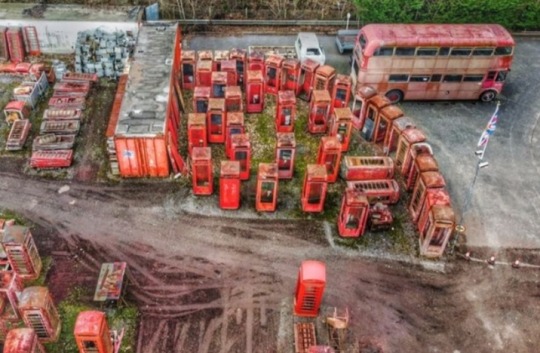
The K2 is deemed as the original phone box having been created in 1926, while the K8 was introduced in 1968 and was a radical change to suit the mood of the Sixties in a more futuristic design.
This was the last of the red kiosks to be produced and very few are in service.
The restoration experts are also able to redesign the interior of these kiosks and offer the ability to personalise the dial centre to carry your current number, but with the old exchange or with a memorable number from the past.
As stated on their website, they supplied the landmarks that you see across the UK and the heart of London such as in Trafalgar Square, Piccadilly Circus, The Tower of London and Queen Elizabeth Olympic Park.
They also carried out many prestigious kiosk restorations for BT, The Corporation of London and English Heritage.
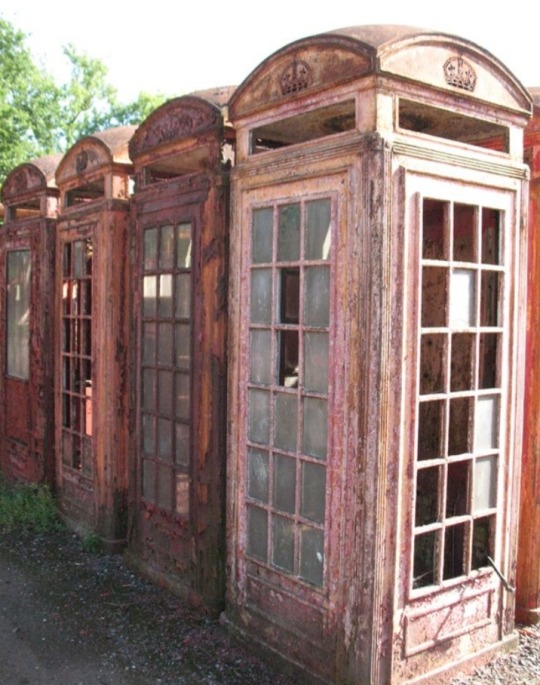
📷: The phone boxes were originally planned to be painted yellow before the iconic cherry red was chosen (Image: Unicorn Restorations)
Their handiwork has even been showcased on the big screen, having supplied period pieces for film and TV productions such as Harry Potter, Paddington and the John Lewis Christmas adverts.
The necessity for these landmarks may have become non-existent in the modern era, but it's perhaps reassuring to know that they're going on to enjoy a second life.
During a 2016 interview with the Daily Mail, photographer Nicolas Ritter stated how he visited the yard back when he was just starting out as an assistant in 2012.
He said:
"Being at the telephone graveyard was a great experience for me. It felt like a journey back into the history of the country as the phone boxes are such a unique symbol of British culture."
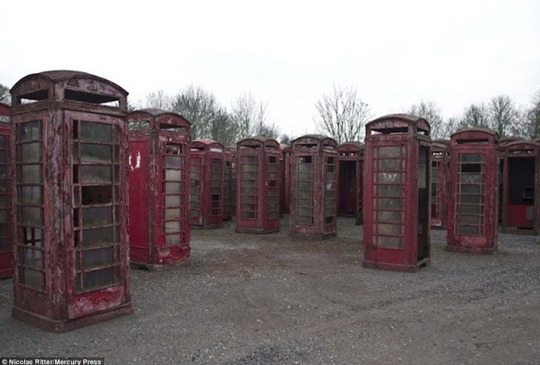

These easily-spotted, brightly coloured boxes were once adored by Brits; by the time the 1980s rolled around, there were more than 73,000 dotted around.
Sadly, those numbers started to dwindle shortly after, with just 21,000 reported to be left standing today.
Thanks to Unicorn Restorations, though, it's clear to see that British people still have a great fondness for the old-fashioned phone box - just maybe not for their original, intended purpose.
#Unicorn Restorations#red telephone box#telephone box graveyard#Merstham#Surrey#General Post Office#Sir Giles Gilbert Scott#phone box#Nicolas Ritter#British culture
29 notes
·
View notes
Photo

George C. Scott in Dr. Strangelove or: How I Learned to Stop Worrying and Love the Bomb (Stanley Kubrick, 1964)
Cast: Peter Sellers, George C. Scott, Sterling Hayden, Keenan Wynn, Slim Pickens, Peter Bull, James Earl Jones. Screenplay: Stanley Kubrick, Terry Southern, Peter George, based on a book by George. Cinematography: Gilbert Taylor. Production design: Ken Adam. Film editing: Anthony Harvey. Music: Laurie Johnson.
In 1964, Stanley Kubrick told us that the world would end not with a whimper but a "Yeehaaa!" And given the bullying and posturing jingoism currently on display in American politics, he may have been right. A lot of Dr. Strangelove has dated: There is no Soviet Union anymore, and the arms race has gone underground (where it may be more dangerous than ever). Some of the gags in the script by Kubrick, Peter George, and Terry Southern have gone stale, such as the jokey character names: Jack D. Ripper, "Bat" Guano, Merkin Muffley. (Although to fault Dr. Strangelove for that is as pointless as faulting Ben Jonson for naming characters in The Alchemist Sir Epicure Mammon and Doll Common. Satire loves its labels.) Where Dr. Strangelove has not dated, however, is in its attitude toward power and those who love and seek it to the point where it becomes an end in itself. Those in Kubrick's film who are capable of seeing the larger picture are ineffectual, like President Muffley (Peter Sellers) and Group Capt. Mandrake (Sellers). They are invariably steamrollered by those in pursuit of the immediate goal, like Gen. Ripper (Sterling Hayden) defending his precious bodily fluids, or Gen. Turgidson (George C. Scott) devoting himself to getting the upper hand on the Russkies, even to the extent of getting our hair mussed a little, or Dr. Strangelove (Sellers) himself, enraptured by the wonders of military technology. But the film really works by Kubrick's mastery of his medium: We find ourselves, against our better judgment, rooting for the bomber crew to reach its target, thanks to the way Kubrick, with the help of film editor Anthony Harvey, manipulates our love of war movie clichés. The film is full of classic over-the-top performances, especially from Hayden and Scott, and of course Sellers's Strangelove is a touchstone mad scientist character, anticipating Edward Teller's selling Ronald Reagan on "star wars" by a couple of decades. In fact, if the film seems to have dated, it may be that reality has outstripped satire. Who could have invented Donald Trump?
6 notes
·
View notes
